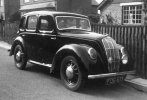-
Welcome to this forum . We are a worldwide group with a common interest in Birmingham and its history. While here, please follow a few simple rules. We ask that you respect other members, thank those who have helped you and please keep your contributions on-topic with the thread.
We do hope you enjoy your visit. BHF Admin Team -
HI folks the server that hosts the site completely died including the Hdd's and backups.
Luckily i create an offsite backup once a week! this has now been restored so we have lost a few days posts.
im still fixing things at the moment so bear with me and im still working on all images 90% are fine the others im working on now
we are now using a backup solution
You are using an out of date browser. It may not display this or other websites correctly.
You should upgrade or use an alternative browser.
You should upgrade or use an alternative browser.
old car snaps
- Thread starter OtherHalf
- Start date
Yes, I think they were prone to tipping over. I was a passenger with a girl once. She took an island too fast and went up on two wheels.A chap I worked with had one. He was regularly tipping it over. Think he had trouble in getting used to it. His previous vehicle was a Russian tank.
(He'd been in the Hungarian Army).
Chris
Johnfromstaffs
Johnfromstaffs
#203.
Every point that you would normally use for recognition of a car is obscured. The radiator and grille are not within the frame which takes away about 90% of the information used by car spotters, and even the wheel hub, which can be quite distinctive on certain models, is obscured by the old gent’s head. However, I am going to take a flyer, which is a technical term for something about half way between an ignorant punt and an informed guess, and suggest that it might be an Austin Light 12/6 Harley Saloon, with a Pressed Steel Co. body. 1931/34.
The problem is that a very similar set of pressings was used by both Hillman, on the contemporary Minx, and Morris on the Cowley and Twelve-Four. At least, I can say for certain that it is not a Rolls-Royce, nor is it a Ford from that era.
From the late 1920s on, the efforts of Ford, especially with the Model A and B, and the American steel pressings industry changed the way cars were built, from coachbuilt, i.e. wooden frames clad with aluminium or steel panels or in the case of Weymann bodies, leather cloth and a filling of kapok or similar fibre; to welded pressed steel components assembled on a jig. The massive presses needed, plus the cost of design and manufacture of the tools for those presses, meant that competing car manufacturers would use the same set of pressings and then try to disguise the finished body with different radiators, grilles and mudguards, or smaller items like hub caps or bonnet louvres, just to add to the fun. The more sets of pressings that could be squeezed (hee-hee) out of a set of tooling, the lower the investment to be amortised into the cost of each copy.
Every point that you would normally use for recognition of a car is obscured. The radiator and grille are not within the frame which takes away about 90% of the information used by car spotters, and even the wheel hub, which can be quite distinctive on certain models, is obscured by the old gent’s head. However, I am going to take a flyer, which is a technical term for something about half way between an ignorant punt and an informed guess, and suggest that it might be an Austin Light 12/6 Harley Saloon, with a Pressed Steel Co. body. 1931/34.
The problem is that a very similar set of pressings was used by both Hillman, on the contemporary Minx, and Morris on the Cowley and Twelve-Four. At least, I can say for certain that it is not a Rolls-Royce, nor is it a Ford from that era.
From the late 1920s on, the efforts of Ford, especially with the Model A and B, and the American steel pressings industry changed the way cars were built, from coachbuilt, i.e. wooden frames clad with aluminium or steel panels or in the case of Weymann bodies, leather cloth and a filling of kapok or similar fibre; to welded pressed steel components assembled on a jig. The massive presses needed, plus the cost of design and manufacture of the tools for those presses, meant that competing car manufacturers would use the same set of pressings and then try to disguise the finished body with different radiators, grilles and mudguards, or smaller items like hub caps or bonnet louvres, just to add to the fun. The more sets of pressings that could be squeezed (hee-hee) out of a set of tooling, the lower the investment to be amortised into the cost of each copy.
Last edited:
mw0njm.
A Brummie Dude
WOW a big come down fom a Tank to a reliantA chap I worked with had one. He was regularly tipping it over. Think he had trouble in getting used to it. His previous vehicle was a Russian tank.
(He'd been in the Hungarian Army).
Chris
Yes, I think they were prone to tipping over. I was a passenger with a girl once. She took an island too fast and went up on two wheels.
Radiorails
master brummie
I had difficulty avoiding a Reliant, in the bad winter of 1963, by driving into someones yard. It was descending a hill in Newton Abbot, in snow, going in circles. 
chrissweep
master brummie
I also had difficulty avoiding a Reliant in the winter, a few years later though. I had just collected my wifes mini from the garage who had repaired the recent body damage she had sustained due to bad road conditions, so she said !I had difficulty avoiding a Reliant, in the bad winter of 1963, by driving into someones yard. It was descending a hill in Newton Abbot, in snow, going in circles.
Went down a local side road that had ice packed ruts all along on the way home, oversteered , ended up on the other sid of the road and hit a parked Reliant which "cracked" all the way up the middle from the bonnet to the back across the roof.
I did knock on the door and own up to it, which didn't down very well as you can imagine, and also got another " scolding " when I got home and reported the new damage to my wifes mini.
Richard Dye
master brummie
Chris, a wise man once told me the a good deed never goes unpunishedI also had difficulty avoiding a Reliant in the winter, a few years later though. I had just collected my wifes mini from the garage who had repaired the recent body damage she had sustained due to bad road conditions, so she said !
Went down a local side road that had ice packed ruts all along on the way home, oversteered , ended up on the other sid of the road and hit a parked Reliant which "cracked" all the way up the middle from the bonnet to the back across the roof.
I did knock on the door and own up to it, which didn't down very well as you can imagine, and also got another " scolding " when I got home and reported the new damage to my wifes mini.
chrissweep
master brummie
Very trueChris, a wise man once told me the a good deed never goes unpunished
Another couple of years on, to 1937/38 and Dad's no. 3, a Ford V8 of probably 1936 vintage, COH619.
This came, in 1937, and very shortly after, nearly went! It's here in Cutler's Garage in Streetly, awaiting attention - the result of a coming-together at the Chester Road/Queslett Road crossroads with a Vauxhall being driven by someone under the influence. My brother and sister were in the car with him at the time but escaped without injury, despite the lack of seatbelts, airbags, soft surfaces and all the other modern paraphenalia. The windscreen suggests that my brother would have had a bit of a headache, though....
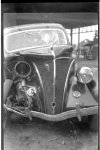
This was the Vauxhall, almost certainly a write-off:
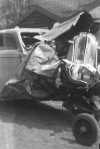
Our V8 was hammered back into pristine condition as shown in the background of this image from summer 1938 - the car is on its holidays (as is the reluctant horseman) and is parked in the same place as the Morris Major three years previously.

(Pity it only warranted a full picture when it had been in the wars).
Chris
This came, in 1937, and very shortly after, nearly went! It's here in Cutler's Garage in Streetly, awaiting attention - the result of a coming-together at the Chester Road/Queslett Road crossroads with a Vauxhall being driven by someone under the influence. My brother and sister were in the car with him at the time but escaped without injury, despite the lack of seatbelts, airbags, soft surfaces and all the other modern paraphenalia. The windscreen suggests that my brother would have had a bit of a headache, though....

This was the Vauxhall, almost certainly a write-off:

Our V8 was hammered back into pristine condition as shown in the background of this image from summer 1938 - the car is on its holidays (as is the reluctant horseman) and is parked in the same place as the Morris Major three years previously.

(Pity it only warranted a full picture when it had been in the wars).
Chris
mw0njm.
A Brummie Dude
wow glad your family were ok,car body's can be banged back into shape,human body's cannot.Another couple of years on, to 1937/38 and Dad's no. 3, a Ford V8 of probably 1936 vintage, COH619.
This came, in 1937, and very shortly after, nearly went! It's here in Cutler's Garage in Streetly, awaiting attention - the result of a coming-together at the Chester Road/Queslett Road crossroads with a Vauxhall being driven by someone under the influence. My brother and sister were in the car with him at the time but escaped without injury, despite the lack of seatbelts, airbags, soft surfaces and all the other modern paraphenalia. The windscreen suggests that my brother would have had a bit of a headache, though....
View attachment 157788
This was the Vauxhall, almost certainly a write-off:
View attachment 157789
Our V8 was hammered back into pristine condition as shown in the background of this image from summer 1938 - the car is on its holidays (as is the reluctant horseman) and is parked in the same place as the Morris Major three years previously.
View attachment 157790
(Pity it only warranted a full picture when it had been in the wars).
Chris
Johnfromstaffs
Johnfromstaffs
#223.
From the ages of the boys, can you put an approximate date on the picture? I do not think that the vehicle has anything to do with Land Rover.
From the ages of the boys, can you put an approximate date on the picture? I do not think that the vehicle has anything to do with Land Rover.
Banjo
master brummie
Hi John, this is another photo (slightly blurred) of the same scene and they were taken around 1958-59. Looks like a late 50s Hillman coming the other way.#223.
From the ages of the boys, can you put an approximate date on the picture? I do not think that the vehicle has anything to do with Land Rover.

Johnfromstaffs
Johnfromstaffs
Thanks for this. I’m glad that it’s not just me who took that sort of photograph!
Let’s start with what we know for sure. That Minx is, at the latest, a Phase VIII, or VIIIA, the production of which ended in 1956. At the earliest, the grille started with the Phase VI, Anniversary Minx, celebrating the model’s 21st year, in 1953. Difficult to tell, but I think it might be a drophead coupé, or a Californian Coupé. So we have a period of time, ‘53 to ‘56, before which the picture could not be taken. The registration of the subject vehicle appears to be EOJ, if so, a Birmingham index in use from August 1938 to February 1939, and reserved for commercial vehicles, although the Brum authority included estate cars as commercial vehicles. If it’s EUJ, that is June to October 1948, issued by the County Council of Salop (Shropshire). Those dates, the suicide doors, and the height and width of the vehicle pretty comprehensively rule out a Land Rover.
Now to the guesswork. The style of the drop-down tailboard, (love the tablecloth!), and the horizontally opening half doors suggest a home or local coachbuilder alteration of a damaged car, or van. The prewar registration plate, (if EOJ), rules out a conversion of a “Tilly” of which there were many still around at that time. although some jiggery-pokery might have occurred, especially due to the arcane tax laws and shortage of vehicles at that time.
I have tried to identify the front door. No easy job and I have no definitive answer, sorry. No Ford of that era still had suicide front doors. The Ten Model CX ceased build in 1937 and did not have a quarter light. The just prewar Austin Ten and Twelve had suicide doors, but the handle was mounted lower. The late thirties Morris models had no-draft ventilation with a strip of fixed glass across the top of the doors’ window aperture. Similarly for Flying Standard cars.
The nearest I can get with that door is a 1936-38 Talbot Ten, or a Singer Bantam from that time, which seems unlikely.
Later…..
I think I have it. Hillman New Minx, 1938/9. The door matches, even to the handle in the chrome belt line.
I hope that this is a possible solution.
This is the Commer van version, from which the conversion might have sprung: -
 www.sellingantiques.co.uk
www.sellingantiques.co.uk
Let’s start with what we know for sure. That Minx is, at the latest, a Phase VIII, or VIIIA, the production of which ended in 1956. At the earliest, the grille started with the Phase VI, Anniversary Minx, celebrating the model’s 21st year, in 1953. Difficult to tell, but I think it might be a drophead coupé, or a Californian Coupé. So we have a period of time, ‘53 to ‘56, before which the picture could not be taken. The registration of the subject vehicle appears to be EOJ, if so, a Birmingham index in use from August 1938 to February 1939, and reserved for commercial vehicles, although the Brum authority included estate cars as commercial vehicles. If it’s EUJ, that is June to October 1948, issued by the County Council of Salop (Shropshire). Those dates, the suicide doors, and the height and width of the vehicle pretty comprehensively rule out a Land Rover.
Now to the guesswork. The style of the drop-down tailboard, (love the tablecloth!), and the horizontally opening half doors suggest a home or local coachbuilder alteration of a damaged car, or van. The prewar registration plate, (if EOJ), rules out a conversion of a “Tilly” of which there were many still around at that time. although some jiggery-pokery might have occurred, especially due to the arcane tax laws and shortage of vehicles at that time.
I have tried to identify the front door. No easy job and I have no definitive answer, sorry. No Ford of that era still had suicide front doors. The Ten Model CX ceased build in 1937 and did not have a quarter light. The just prewar Austin Ten and Twelve had suicide doors, but the handle was mounted lower. The late thirties Morris models had no-draft ventilation with a strip of fixed glass across the top of the doors’ window aperture. Similarly for Flying Standard cars.
The nearest I can get with that door is a 1936-38 Talbot Ten, or a Singer Bantam from that time, which seems unlikely.
Later…..
I think I have it. Hillman New Minx, 1938/9. The door matches, even to the handle in the chrome belt line.
I hope that this is a possible solution.
This is the Commer van version, from which the conversion might have sprung: -
1936 Commer 8cwt Van | 169995 | Sellingantiques.co.uk
Declaration: 1936 Commer 8cwt Van has been declared an antique and was approved for sale on sellingantiques.co.uk.
Last edited:
Eric Gibson
master brummie
I think it's too high off the ground to be the Hillman van/tilly, maybe a Jowett. but the quarter light makes that doubtful.
How about the Bedford here:
https://i.pinimg.com/originals/2b/7a/4d/2b7a4db67f717ede43b1c1fe8ed68823.jpg
How about the Bedford here:
https://i.pinimg.com/originals/2b/7a/4d/2b7a4db67f717ede43b1c1fe8ed68823.jpg
Last edited:
Banjo
master brummie
Thanks John, I had a feeling you might come up with a resolution. It is an EOJ reg. Incidently, the Family story is that Pop (Father-in-Law) camped overnight outside this car dealership in Potters Hill Aston in order to be first to buy a car from the vehicles they were selling off cheap the next day. No one knows now just how cheap this car was.Thanks for this. I’m glad that it’s not just me who took that sort of photograph!
Let’s start with what we know for sure. That Minx is, at the latest, a Phase VIII, or VIIIA, the production of which ended in 1956. At the earliest, the grille started with the Phase VI, Anniversary Minx, celebrating the model’s 21st year, in 1953. Difficult to tell, but I think it might be a drophead coupé, or a Californian Coupé. So we have a period of time, ‘53 to ‘56, before which the picture could not be taken. The registration of the subject vehicle appears to be EOJ, if so, a Birmingham index in use from August 1938 to February 1939, and reserved for commercial vehicles, although the Brum authority included estate cars as commercial vehicles. If it’s EUJ, that is June to October 1948, issued by the County Council of Salop (Shropshire). Those dates, the suicide doors, and the height and width of the vehicle pretty comprehensively rule out a Land Rover.
Now to the guesswork. The style of the drop-down tailboard, (love the tablecloth!), and the horizontally opening half doors suggest a home or local coachbuilder alteration of a damaged car, or van. The prewar registration plate, (if EOJ), rules out a conversion of a “Tilly” of which there were many still around at that time. although some jiggery-pokery might have occurred, especially due to the arcane tax laws and shortage of vehicles at that time.
I have tried to identify the front door. No easy job and I have no definitive answer, sorry. No Ford of that era still had suicide front doors. The Ten Model CX ceased build in 1937 and did not have a quarter light. The just prewar Austin Ten and Twelve had suicide doors, but the handle was mounted lower. The late thirties Morris models had no-draft ventilation with a strip of fixed glass across the top of the doors’ window aperture. Similarly for Flying Standard cars.
The nearest I can get with that door is a 1936-38 Talbot Ten, or a Singer Bantam from that time, which seems unlikely.
Later…..
I think I have it. Hillman New Minx, 1938/9. The door matches, even to the handle in the chrome belt line.
I hope that this is a possible solution.
This is the Commer van version, from which the conversion might have sprung: -
1936 Commer 8cwt Van | 169995 | Sellingantiques.co.uk
Declaration: 1936 Commer 8cwt Van has been declared an antique and was approved for sale on sellingantiques.co.uk.www.sellingantiques.co.uk
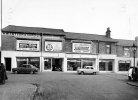
Last edited:
Johnfromstaffs
Johnfromstaffs
Some Jowetts to look at: - http://www.simoncars.co.uk/jowett/jowettcv.html btw the Jowett Bradford has front hung doors.
and the door handle on the Bedford PC is lower than the styling crease in the panel.
and the door handle on the Bedford PC is lower than the styling crease in the panel.
Johnfromstaffs
Johnfromstaffs
Perhaps there is some more enlightenment here: - https://www.imcdb.org/v001066479.html
Please note: ref. the bantering tone on the above website, we all know each other very well!
Please note: ref. the bantering tone on the above website, we all know each other very well!
Last edited:
farmerdave
master brummie
Johnfromstaffs
Johnfromstaffs
DDP - Reading August 1947 to June 1948.
DOP - Birmingham December 1937 to Jan 1938.
However, Birmingham reserved special indices for commercial vehicles and this is not one of them. So I reckon it’s a 1947/8 lorry, but no idea what.
Better to date from the “peep-toe” shoes, early 50s I think, or the Austin Devon in the background, 1947+.
DOP - Birmingham December 1937 to Jan 1938.
However, Birmingham reserved special indices for commercial vehicles and this is not one of them. So I reckon it’s a 1947/8 lorry, but no idea what.
Better to date from the “peep-toe” shoes, early 50s I think, or the Austin Devon in the background, 1947+.
Last edited:
Lloyd
master brummie
Austin A60 van, based on the similar-fronted car. An uncle had one when he was a butcher in a Northamptonsire village.This is a photo of my ex boyfriends old works van on holiday in Prestatyn North Wales. I learned to drive in it.
jukebox
Engineer Brummie
Pedrocut
Master Barmmie
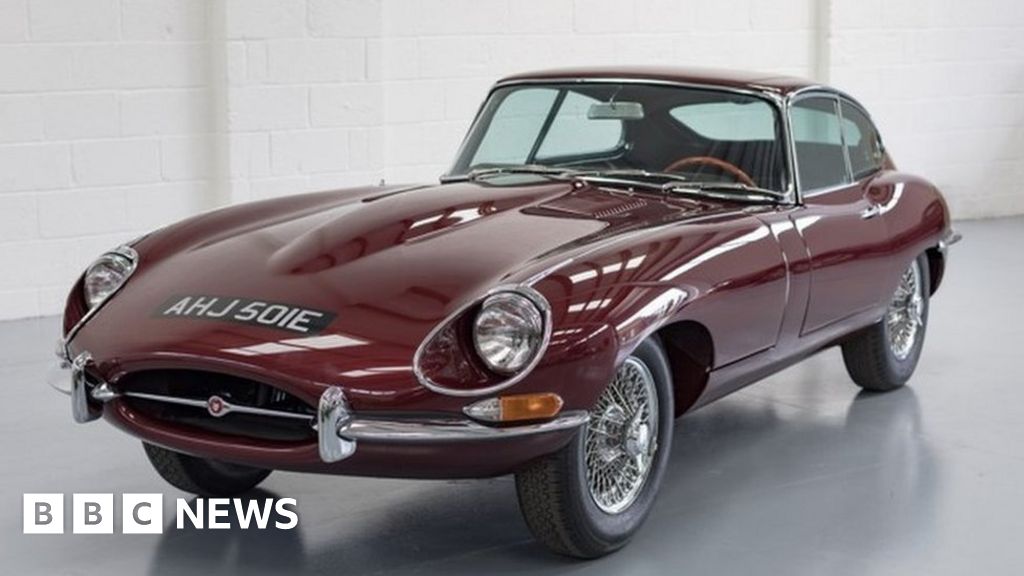
The classic cars being converted to electric vehicles
Historic cars are being retrofitted with recycled electric motors and batteries.
www.bbc.co.uk
Eric Gibson
master brummie
The firm currently charges around £20,000 per conversion, 
Kind of defeats the object doesn't it. What next, compressed air 'steam' locomotives? Stick to Jay Leno's 'Owen Magnetic'!
The classic cars being converted to electric vehicles
Historic cars are being retrofitted with recycled electric motors and batteries.www.bbc.co.uk
Pedrocut
Master Barmmie
What ever next, run the Roller on wine and cheese.
Johnfromstaffs
Johnfromstaffs
I have investigated the cost of converting my Bentley to electric power and have been given a budgetary figure of about £60,000. Needless to say, I view this as a non starter, and have decided to await developments in terms of kits to convert classic cars gaining more market coverage. People are starting to look at this, although the high price of the electric replica Morris van being used by BBC‘s “Click” programme does not bode well.
One of the difficulties is that if you are going to create an electric version of your 70 year old car, the car being presented needs to be almost in show condition, which could mean an electric 50s Bentley could set you back £100k not including firstly purchasing a car to convert, if, unlike me, you don’t have a spare Bentley sitting in the garage.
One of the difficulties is that if you are going to create an electric version of your 70 year old car, the car being presented needs to be almost in show condition, which could mean an electric 50s Bentley could set you back £100k not including firstly purchasing a car to convert, if, unlike me, you don’t have a spare Bentley sitting in the garage.
"Daddy, why does your old car say 2.4 on the back?"
"Well son, it's.. err.. it means 2.4 volts."
"Daddy, why does it have two pipes poking out the back?"
"Ah, yes, that's where the air comes out that came in through the radiator in the front!"
"Daddy.."
"Don't you have homework to do?"
"Well son, it's.. err.. it means 2.4 volts."
"Daddy, why does it have two pipes poking out the back?"
"Ah, yes, that's where the air comes out that came in through the radiator in the front!"
"Daddy.."
"Don't you have homework to do?"




